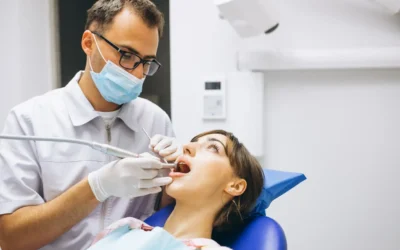Dental crowns, also sometimes referred to as dental caps, are a commonly used dental prosthesis to restore damaged, decayed, or missing teeth.
Teeth that have damage or decay that is too severe to be restored with a dental filling or composite bonding are usually restored with dental crowns, as are teeth that have undergone root canals.
To restore a missing tooth with a dental crown, a dental implant must first be placed in the gums to act as anchor points.
What Types of Crowns Are Available?
Permanent crowns can be made from stainless steel, all metal (such as gold or another alloy), porcelain-fused-to-metal, all resin, or all ceramic.
Stainless steel crowns are prefabricated crowns that are used on permanent teeth primarily as a temporary measure. For children, a stainless steel crown is commonly used to fit over a primary tooth that’s been prepared to fit it. The crown covers the entire tooth and protects it from further decay. When the primary tooth comes out to make room for the permanent tooth, the crown comes out naturally with it.
Metals used in crowns include alloys that have a high content of gold or platinum, or base-metal alloys (for example, cobalt-chromium and nickel-chromium alloys). Metal crowns withstand biting and chewing forces well and probably last the longest in terms of wear down. Also, metal crowns rarely chip or break. The metallic color — and the high price of gold — is the main drawback. Metal crowns are a good choice for out-of-sight molars.
Porcelain-fused-to-metal dental crowns can be color matched to your adjacent teeth (unlike the metallic crowns). However, more wearing to the opposing teeth occurs with this crown type compared with metal or resin crowns. The crown’s porcelain portion can also chip or break off. Next to all-ceramic crowns, porcelain-fused-to-metal crowns look most like normal teeth. These crowns can be a good choice for front or back teeth as well as long bridges where the metal is needed for strength.
All-ceramic or all-porcelain dental crowns provide better natural color match than any other crown type and may be more suitable for people with metal allergies. All-ceramic crowns can be used for front and back teeth.
Temporary versus permanent. Temporary crowns can be made in your dentist’s office, whereas most permanent crowns are typically made in a dental laboratory. Typically, temporary crowns are made of an acrylic-based material or stainless steel and can be used as a temporary restoration until a permanent crown is constructed by a lab.



